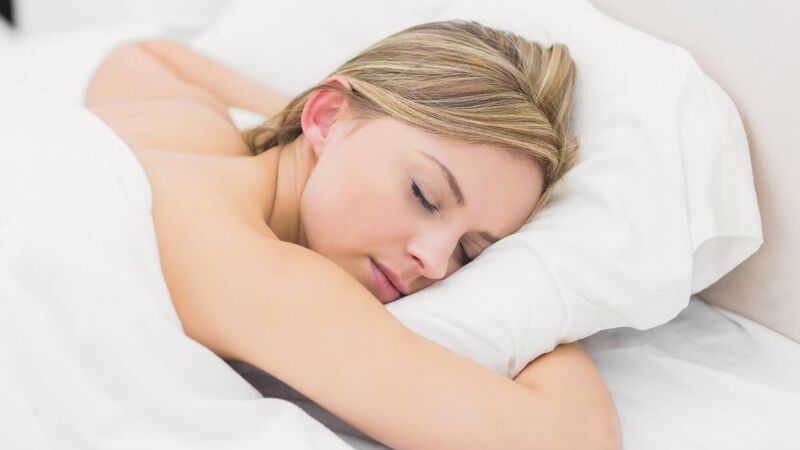Rest assured: How the way we sleep affects our waking hours

More than 50% of people sleep on their sides, while only 7% rest on their front. Picture: iStock
The average person spends a third of their life, or 26 years, asleep. We also spend seven years of our life trying to get to sleep.
Some people will have busy minds and may struggle to switch off enough to get to sleep, while others will struggle to find a comfortable position to fall asleep.
Are you a side or a back sleeper? Or do you fall asleep on your front? There are a few sleeping positions, but which is the best?
While we sleep, our bodies recover from the day. Getting adequate sleep, at least seven hours each night, is essential to that recovery process.
A position that aids a good night’s sleep, or at least helps us get to sleep, plays a vital role in our overall sleep quality, according to Dr Seán McKenna, a clinical specialist physiotherapist.
“We are all different, and a sleeping position that works for one person does not necessarily work for someone else,” he says.
“A better way of thinking about it is to find what we call your position of ease, where your body feels most comfortable. In this position, you will find it easier to go to sleep, and that is what’s most important.”
A GOOD NIGHT'S SLEEP
When we get into bed at night, we often feel the stresses and strains in our bodies loosening as pressure eases. A good sleeping position will accentuate that feeling, relieving pressure and promoting a good night’s sleep, says McKenna.
There are several different sleeping positions: Lying on your left side, lying on your right side, lying on your back, lying on your front. Each has its merits, although some positions have more benefits than others.
While we may each favour a different sleeping position, more than half of us, 54%, sleep on our sides. “Sleeping on our left side, with a pillow between our legs and our head slightly in a forward position, is widely considered the optimal sleeping position,” says McKenna.
Pregnant women are generally advised to sleep on their left sides, particularly in their third trimester.
This is because the position reduces pressure on the internal organs, says McKenna: “The body can relax that little bit more in this position. But if you are pregnant, you shouldn’t worry too much if you lie on your back. You will wake up naturally if you’re in this position for too long, and you can simply turn back on your side.”
In fact, McKenna says we should not worry too much about the sleeping position we wake up in, as having a good night’s sleep is far more important.
Sleeping on your back is the second most common sleeping position and is favoured by 37.5% of people. It can be a good position for people who suffer from chronic back pain, says McKenna. However, he adds, it can exacerbate sleep apnea, where your upper airway becomes blocked and causes short pauses in breathing when you’re asleep.
Sleeping on our front is the least common sleeping position, with just 7% adopting it. While it can be a good position for those prone to snoring — as it opens up the airway — it offers the least amount of back support. Sleeping this way can put pressure on your back, and particularly your neck, as you need to turn your head to one side to sleep this way.
McKenna says we need to be careful of “succumbing to a fear complex” where we become over-anxious about specific research, ads or what we read on social media: “People will see these headlines or posts saying we should sleep a certain way if we have sleep apnea or back pain, but we shouldn’t be too convinced by these. We need to be careful not to box ourselves into certain sleeping positions.”
POSITION OF EASE
We are unlikely to stay in the same sleeping position all night.
“Research shows that it’s typical to have between 10 to 30 periods of tossing and turning at night,” says McKenna.
“Our bodies will always take the easy way out. If we have a dodgy knee or pain in the lower back, we’ll naturally adapt to the niggles and shift position accordingly. Again, we go back to the position of ease. To get to sleep and stay asleep, it’s best to be in a comfortable position, whatever that position is.”
During the first stages of our sleep cycle, we are most restless. Our tossing and turning usually becomes less frequent as we move into deep sleep.
“However, certain types of restlessness can interfere with sleep quality. If you are in pain or stressed, if there’s a noise or light waking you up. That’s where sleep hygiene is essential,” says McKenna.
Sleep hygiene is a series of habits, behaviours, and environmental factors that we can tweak to ensure a good night’s sleep.
“It all comes back to what we do during the day,” says McKenna. “If we’re tense during the day, then the chances are you will be tense going to sleep. We need to alter that by winding down before we go to bed.”
He advises that we do a few stretches before going to bed to loosen our bodies up: “You can do what’s called dynamic stretching. It’s a very simple stretch like a sit-to-stand movement or lifting your heels off the ground, for example.
“We don’t want to elevate the heart rate, so 30 to 60 seconds of simple stretching or something gentle like tai chi is ideal.”
Getting to sleep in the first place is the Holy Grail, and over time, we will gravitate towards a position that helps us do that.
“Human beings are creatures of habit,” says McKenna. “Just like we choose a favourite side of the bed, most of us will have a favourite sleep position to help us fall asleep. It’s all about getting to sleep and how we do that.
CONNECT WITH US TODAY
Be the first to know the latest news and updates

Celebrating 25 years of health and wellbeing





